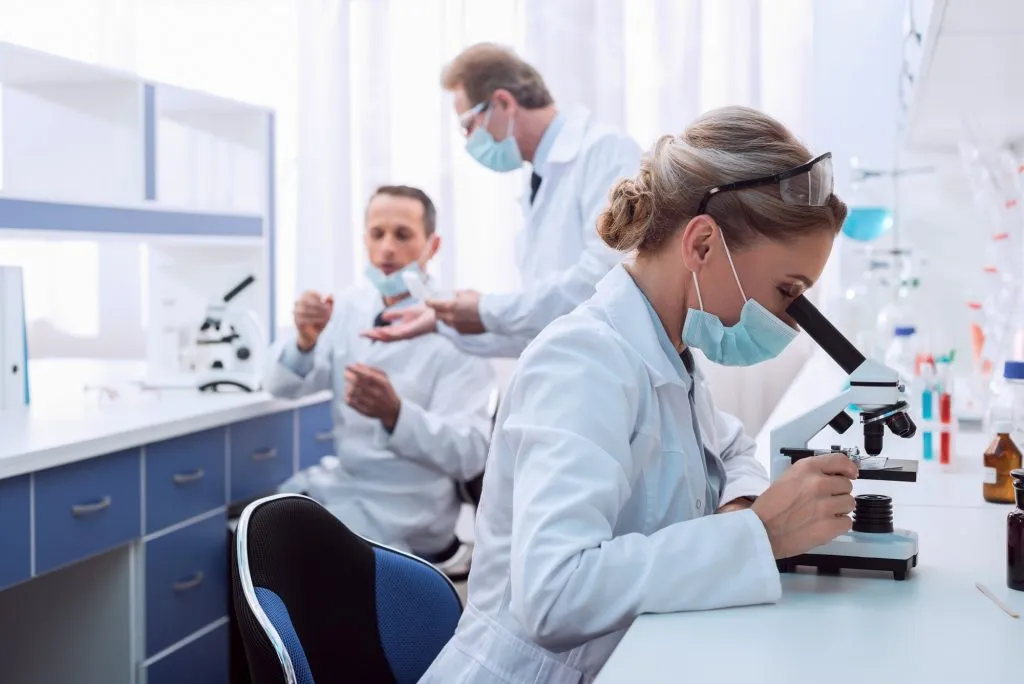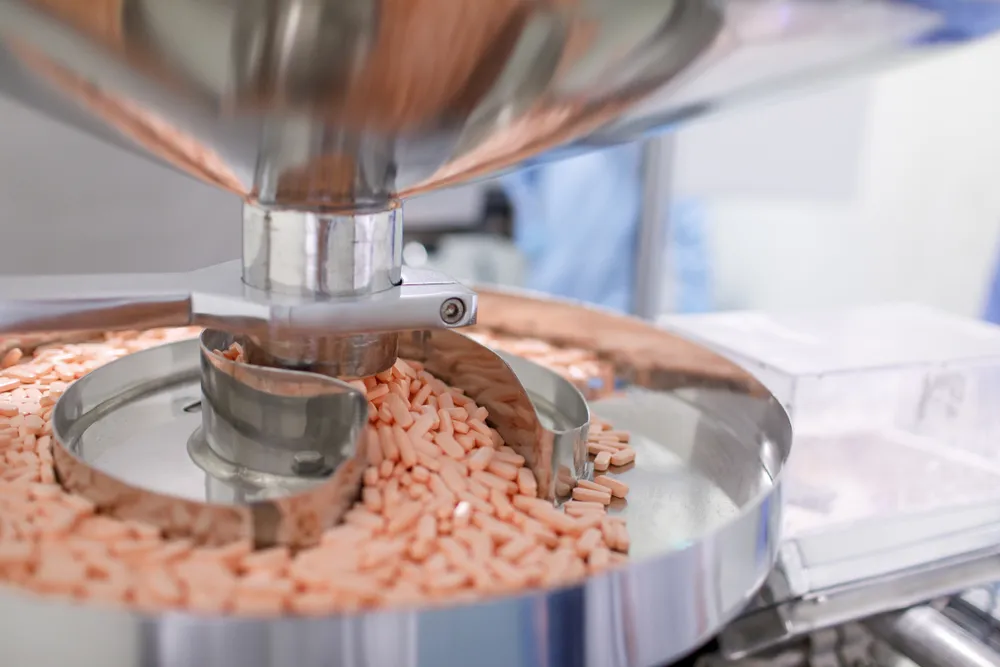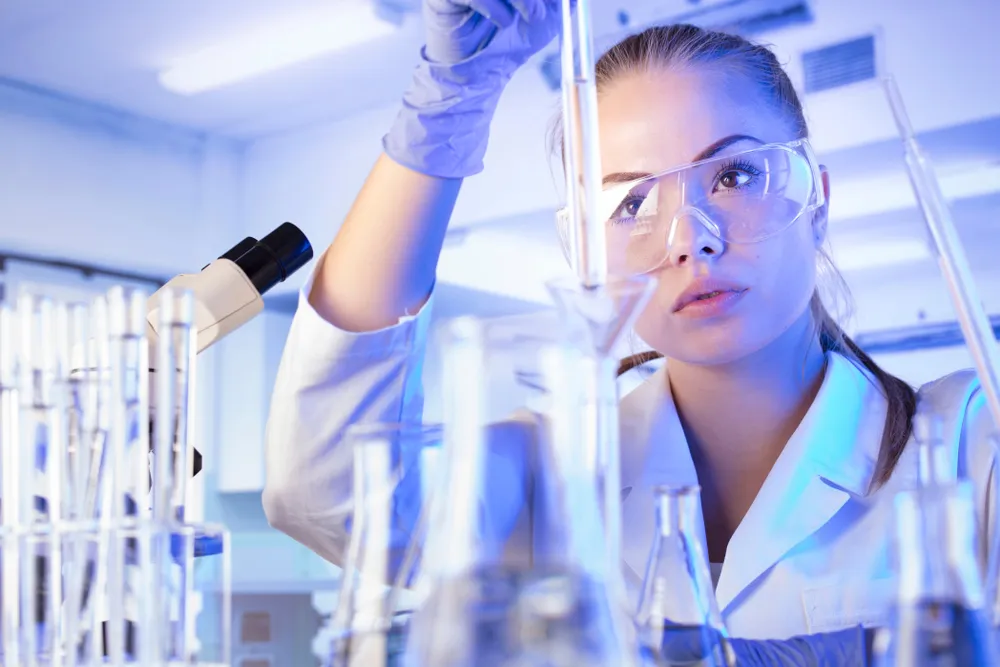Pharmaceuticals Testing
According to the FDA, the pharmaceutical quality control laboratory serves as one of the most important functions in the entire pharmaceutical production and control process. In fact, a significant portion of CGMP regulations (21 CFR 11) are dedicated to the quality control laboratory and product testing. When considering pharmaceutical testing labs, NJ Labs recognizes that the laboratory you choose can make a huge impact in helping you get market approval for new products and just as important, in avoiding costly delays in submissions, approvals, recalls or interruptions in your entire drug manufacturing chain. NJ Labs has expertise across a wide range of pharmaceutical testing, with an eye towards trends that are becoming more of an issue with the FDA. Our assays of APIs and Finished drug substances use a compendial method, confirming the ability to produce reliable and reproducible results by USP <1225> and USP <1226>. Some other key areas of analytical testing focus for NJ Labs in pharmaceutical lab testing include:


ICP-MS Analysis Pharmaceutical Lab Testing
Regulations for heavy metals pharmaceutical testing (Pb-Lead, As-Arsenic, Cd-Cadmium, Hg-Mercury) are now required to be done by USP<233> Elemental Impurities by ICP-MS rather than using previous traditional wet chemistry methods or Atomic Absorption. In fact, the United States Pharmacopeia omitted the wet chemistry methodology for Heavy Metals <231> in favor of USP <233> performed by the ICP-MS analytical instrument. Our ICP-MS instrument can detect metals and minerals at parts per trillion (PPT) levels.
HPTLC Testing for Pharmaceuticals
HPTLC is an extension for thin-layer chromatography (TLC) that allows for better resolution and quantification of compounds at lower limits of detection and separation. HPTLC testing is primarily used to determine quantity and purity of ingredients in pharmaceutical formulations. At NJ Labs, we frequently combine HPTLC testing for impurities in combination with Attenuated Total Reflection – Fourier Transform (ATR-FTIR) infrared spectroscopy for impurities and ingredient identification in pharmaceutical products.
TOC Testing for Pharmaceuticals
Total Organic Carbon (TOC) testing is used in the pharmaceutical industry to determine water quality both in quantifying organic impurities in pharmaceutical water used for drug manufacturing as well as cleaning effectiveness or cleaning validation to detect residual cleaning agents in rinse or swab samples. NJ Labs has extensive experience in TOC testing in support of pharmaceutical manufacturing and we are compliant with the US Pharmacopeia <643> Total Organic Carbon for control and cleaning validation of pharmaceutical water.
Amino Acids Testing in Pharmaceuticals
The best method to detect the purity of an amino acid in pharmaceuticals is the Ninhydrin Positive Substances and Ammonium test, which combines JP (Japanese Pharmacopeia) and EP or BP (European or British Pharmacopeia) methods. This test is a specialty of NJ Labs demonstrates our competence in amino acids testing which includes a validated method on a UPLC with a closed post column derivatization system.
Dehydrated Alcohol Testing in Pharmaceuticals
Dehydrated alcohol is commonly used as a solvent or injected for pain relief. It is also used as an antiseptic and disinfectant which helps in preventing the spread of bacteria and to sterilize the skin as well as medical equipment. Surging demand for medial wipes and hand sanitizers due to the pandemic in 2020 is driving growth of this market. In response to this growth, Limit of Methanol testing is now a new requirement from USP in the Dehydrated alcohol monograph. Since this USP requirement has been introduced pharmaceutical companies have to perform at minimum ID-C to be compliant with current USP monograph of Alcohol (Ethyl alcohol 95%) or Dehydrated alcohol (Ethyl Alcohol 200 proof). NJ Labs has expertise in this specialized area of pharmaceutical testing.
Suitability Testing in Pharmaceuticals
Pharmaceutical suitability testing determines the ability of test methods to detect the presence of microorganisms in products that may be inherently antimicrobial. We also have expertise in pharmaceutical testing for Fatty Acid profiles for oils as many pharma companies use fatty oils as fillers or bonding agents like Polysorbate 60, 80 and many more.
Water Activity Testing in Pharmaceuticals
Pharmaceutical suitability testing determines the ability of test methods to detect the presence of microorganisms in products that may be inherently antimicrobial. We also have expertise in pharmaceutical testing for Fatty Acid profiles for oils as many pharma companies use fatty oils as fillers or bonding agents like Polysorbate 60, 80 and many more.
Many pharmacopeia articles include water within their matrices and are also susceptible to water exchange with the surrounding environment. NJ Labs recognizes that total water content is an important quality attribute, and we use several methods for determining water content as provided in Water Activity 〈922〉. Some of the water may be tightly bound and not available to participate in chemical, biochemical, or physicochemical reactions (e.g., as hydrate salts), whereas some of the water may be more freely available to participate in reactions such as hydrolysis or may provide an environment that can support microbiological growth. It is important to establish what fraction of the total water is available (active). NJ Labs is skilled in the determination of water activity (aw), especially those recent new water activity procedures added to the US Pharmacopeia. Our testing will aid decisions during ingredient and product processes design, ingredient selection, packaging selection, and product storage conditions.


Other Common Areas of Pharmaceutical Testing
Additionally, other more common tests that we specialize in for the pharmaceutical industry include:
- Alginates Assay <311>
- Specific Rotation <781>
- Limit of Sulfur Dioxide
- Nitrogen Determination (%N for samples such as Povidone, Copovidone, Crospovidone)
- Selenium <291>
- Total Organic Carbon (TOC) Pharmaceutical Water <643>
- Water Activity <922>
- Sterility <71>
- Endotoxins <85>
- Burkholderia Cepacia Complex (BCC) <60>
- Suitability Testing <61> and <62>
- Preparatory Testing <2021> and <2022>
- Antimicrobial Effectiveness Testing (AET) <51>
- Limit of Fluoride Test
- Viscosity <911> Capillary and <912> Rotational
- Methoxy Determination <431> (example sample: Ethylcellulose Aqueous Dispersion)
- High Performance Thin Layer Chromatography (HPTLC) for impurities and ID <203>
- Identification by FTIR (using ATR) <854>
- Ninhydrin Positive Substances and Ammonium
- Bulk Density and Tapped Density <616>
- <467> Residual Solvents by GC with Headspace
- All other tests with GC with headspace
- <228> Ethylene oxide and Dioxane
- <469> ethylene glycol, diethylene glycol, and triethylene glycol in ethoxylated substances
- Limit of Diethylene glycol and ethylene glycol (sample: propylene glycol)
- Organic Impurities – Part 1: Limit of free ethylene oxide and Part 2: Limit of 2-methoxyethanol, 2-ethoxyethanol, ethylene glycol and diethylene glycol (sample: diethylene glycol monomethyl ether)
- Chloride titrations
- Talc (content of magnesium validated by USP and ICP-MS method)
- Magnesium Stearate
- Stearic Acid
- Sucrose: Sulfite Test (special test) and Assay (requires Refractive Index Detector – RID)
- Mannitol: assay and related substances
- All similar techniques: Hypromellose, Hypromellose Acetate Succinate, Ethyl cellulose, hydroxypropyl cellulose, low-substituted hydroxypropyl cellulose
- Urea: assay and organic impurities